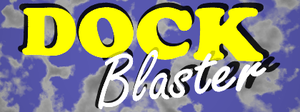DOCK Blaster: Difference between revisions
No edit summary |
No edit summary |
||
| Line 35: | Line 35: | ||
* [[Terms And Conditions]] | * [[Terms And Conditions]] | ||
* [[Just Watching]] | * [[Just Watching]] | ||
* [[Blaster Issues]] | |||
To cite DOCK Blaster, please reference Huang, Shoichet, Irwin, "Benchmarking Sets for Molecular Docking", J Med Chem 2006, 49(23), 6789-6801 | To cite DOCK Blaster, please reference Huang, Shoichet, Irwin, "Benchmarking Sets for Molecular Docking", J Med Chem 2006, 49(23), 6789-6801 | ||
Revision as of 21:48, 10 July 2008
DOCK Blaster is a free web based molecular docking and virtual screening service, on the web at http://blaster.docking.org. To get started, you will need at least:
- The structure of the target in PDB format (preferred) or mol2 format
- A specification of the binding site, which may be one of:
- A docked ligand in mol2 format, which is also used to test the docking parameterization
- "hot spots", in PDB format, which may be based on one or more ligands.
- Atoms of residues forming the binding site. The center of inertia of these atoms should coincide with where you expect the ligand to go.
That's really all you need to get started. If you don't have a particular project in mind, and you are just curious about DOCK Blaster, you may use some sample data to experiment. To read more, please consult the topics below.
Before you get started
Preparation and Docking
Understanding the Results
Other information
To cite DOCK Blaster, please reference Huang, Shoichet, Irwin, "Benchmarking Sets for Molecular Docking", J Med Chem 2006, 49(23), 6789-6801
For help with DOCK Blaster, please join and write to the DOCK Blaster mailing lists [1]. We welcome your feedback about DOCK Blaster. Please send bug reports to support at docking.org. Please send opinions to comments at docking.org.
